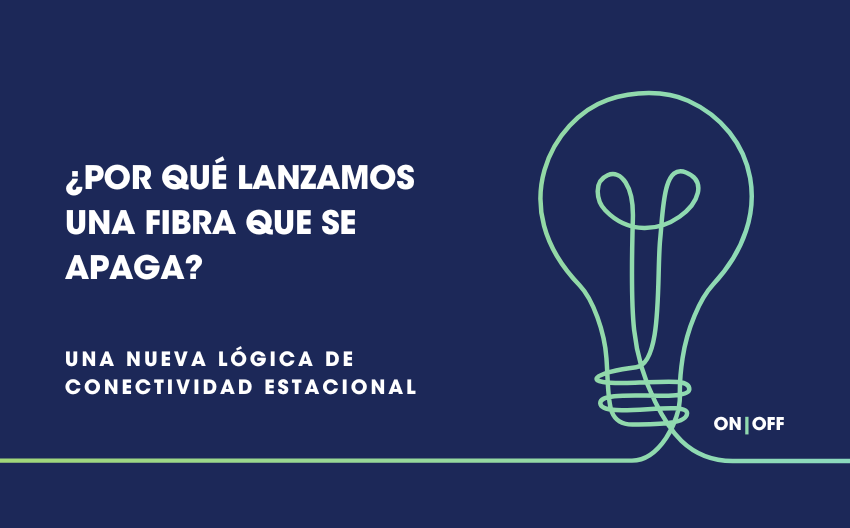Why did we launch a fiber you can turn off?

A structural response to changing housing and connectivity usage
Not every household needs to be connected year-round. A decade ago, this statement might have sounded unthinkable in the telecommunications world. Today, it’s a fact — supported by data and user behavior alike.
In 2023, more than 3.9 million Spanish households reported owning a second home, according to the INE’s Continuous Household Survey. Many of these properties are occupied only a few months per year, mostly during holiday seasons. And yet, most traditional connectivity models still rely on fixed, year-round subscriptions.
At the same time, residential mobility is growing. The rise of digital nomads, mid-term rentals, temporary homes for students, or even health-related relocations is opening a new space: users who need high-quality FTTH connectivity — but only for a limited time.
The big picture is clear:
- Spain has one of the highest internet access rates in Europe (96.1% of households), with fiber adoption surpassing 84%
- 1 in 3 households is single-person
- Spain ranks as the second most popular destination for digital nomads (Nomad List)
- And 78% of consumers prioritize services they can activate or pause easily (Deloitte Digital Consumer Trends 2023)
Fibra FLEX was created in this context — a wholesale solution designed to meet this structural shift in how connectivity is used. The service allows fiber connections to be turned ON or OFF according to the end user’s actual needs, with no technical disconnections or physical interruptions. Operationally, ISPs manage the full ON/OFF cycle from the Onivia services portal, with complete autonomy.
This isn’t just about flexibility. It’s about efficiency, adaptability, and smart service design. A modern network doesn’t just connect — it listens, adapts, and evolves.
Because today, more than ever, connectivity should follow people’s rhythm.


